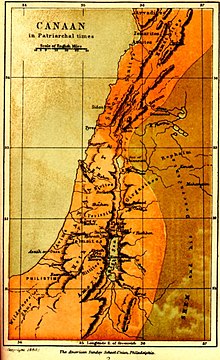
| Part of a series on |
| Ancient Near East mythology |
|---|
Canaanite religion was a group of ancient Semitic religions practiced by the Canaanites living in the ancient Levant from at least the early Bronze Age to the first centuries CE. Canaanite religion was polytheistic and in some cases monolatristic. It was influenced by neighboring cultures, particularly ancient Egyptian and Mesopotamian religious practices. The pantheon was headed by the god El and his consort Asherah, with other significant deities including Baal, Anat, Astarte, and Mot.
Canaanite religious practices included animal sacrifice, veneration of the dead, and the worship of deities through shrines and sacred groves. The religion also featured a complex mythology, including stories of divine battles and cycles of death and rebirth. Archaeological evidence, particularly from sites like Ugarit, and literary sources, including the Ugaritic texts and the Hebrew Bible, have provided most of the current knowledge about Canaanite religion. The religion had a significant influence on neighboring cultures and later religious traditions, including ancient Israelite religion and Phoenician religion.